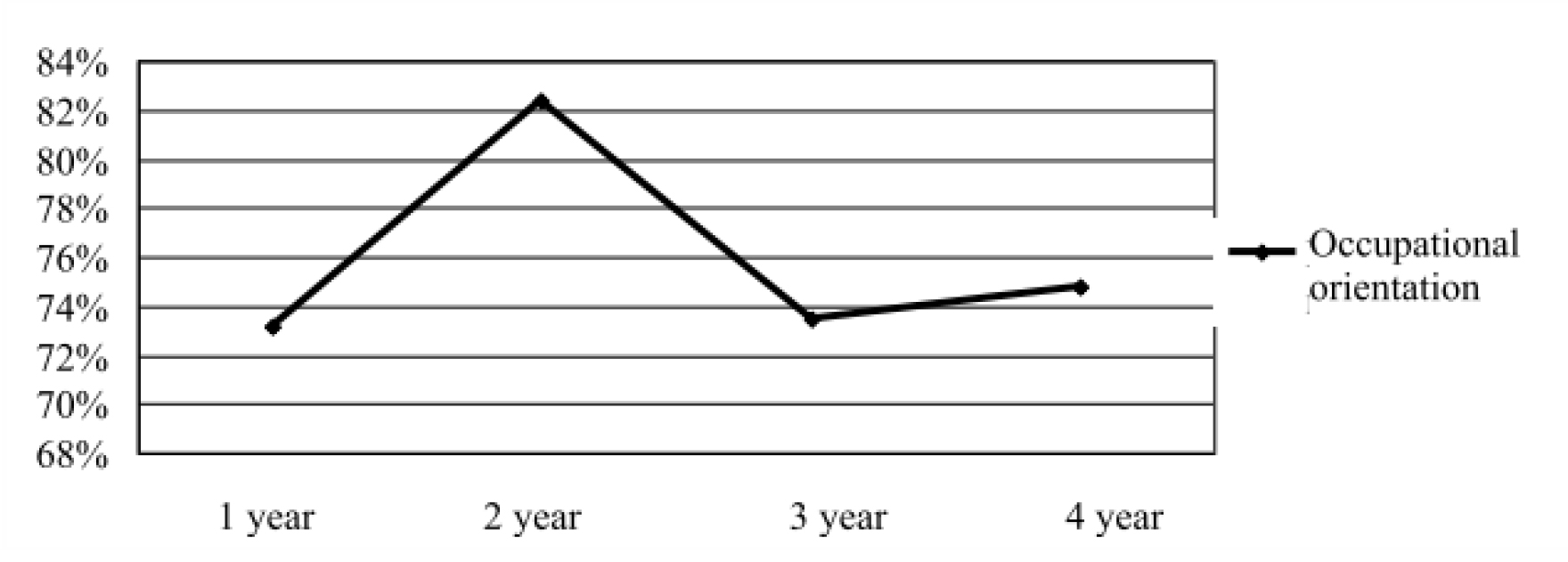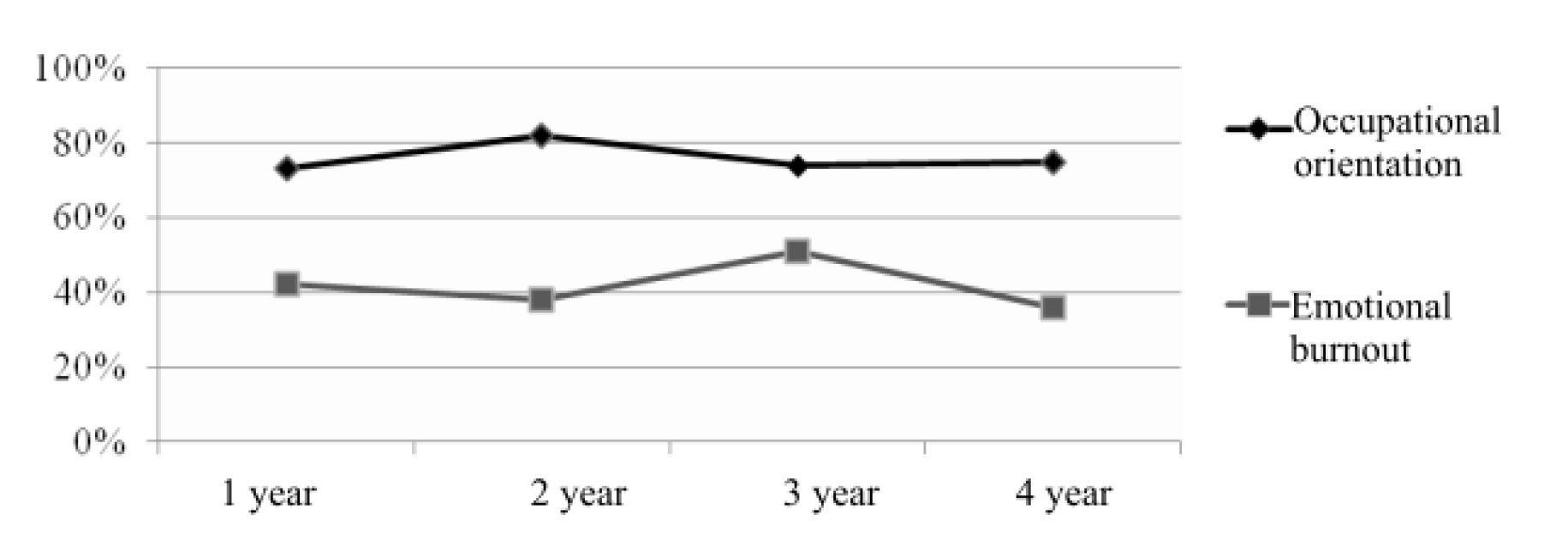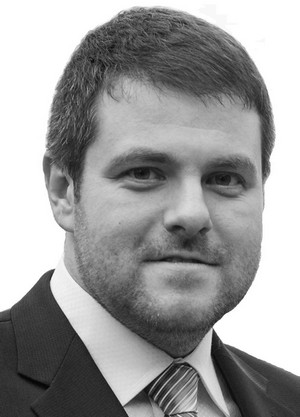Characteristics of components of personality specifics of students specializing in "Physical Education for Persons with Impairments"
Фотографии:
ˑ:
Associate professor, Ph.D. A.A. Manoylov
Velikie Luki State Academy of Physical Culture and Sport, Velikie Luki
Keywords: physical education staff training, occupational components of individual, emotional burnout, students majoring in "Physical Education for Persons with Impairments (Adaptive Physical Culture)".
Introduction. According to the Ministry of Health and Social Development, the number of impaired persons in the Russian Federation grows by one million every year. These people often find themselves ‘outside the mainstream’ as they are devoid of personal fulfillment opportunities and cannot feel themselves fully accomplished or indeed needed by the society. Adaptive physical culture (APC) specialists facilitate adaptation of the impaired people to success-oriented social activities through a range of special physical exercises. However, despite its growing importance, the profession of an adaptive physical culture trainer or instructor still belongs to ‘caring' occupations associated with various challenging situations and difficulties, requiring a lot of self-discipline, self-regulation, and self-devotion.
V.V. Milakova singles out a set of common individual psychological features characteristic of the caring specialists and hence necessary for the students aiming to enter the profession, such as sociability, orientation at occupational activities, predominance of altruism over egotism, competency, tolerance, responsibility, and the domination of such values as health, self-confidence, freedom and well-being, and confidence in personal appropriateness for the occupational requirements [2].
Note should be made that it is the specialist’s personality which is the principal means of achieving a high professional level in caring professions. A specialist’s performance is heavily dependent on occupational maturity complimented by occupational orientation.
According to E.I. Rogov, the level of occupational orientation can manifest itself in the development of its components and emergence of respective deviations. The latter result in reduced interest to occupational activities, lack of social responsibility, breach of basic ethics and morals, and lack of awareness of the humanistic aspects of relevant activities [3].
The purpose of the research was to evaluate the individual occupational orientation (IOM) level and its constituent components manifested by the students specializing in Physical Education for Persons with Impairments in the process of their higher education.
Materials and methods. An IPM evaluation method for APC students based on the concept developed by the member of Academy of Psychology N.V. Kuz'mina [1], was used as the principal research method. In order to research the emotional burnout syndrome as a complimentary evaluation criterion, we also employed the diagnostics methods elaborated by V.V. Boyko [4]. The research was carried out in the 2013-2014 academic year. Testing involved the 1 – 4 year students of Velikie Luki State Academy of Physical Training and Sports, majoring in Physical Education for Persons with Impairments (Adaptive Physical Culture). 45 students were included into the sample.
Research results and discussion. Analysis of the diagnostic research results has revealed comparatively low occupational orientation of the 1st, 3rd and 4th year students, which causes certain concerns (Fig. 1).

Fig. 1. Dynamics of individual occupational pedagogical orientation features manifested by the students majoring in Physical Education for Persons with Impairments (APC) during their study
While the 1st year students still have a chance to improve in the course of study, the 3rd and 4th year students are to go through internship and probation periods, when they have to demonstrate their occupational ‘creditworthiness’ to themselves, their tutors, superiors and peers. More often than not, they feel uncertain about their occupational knowledge, experience lack of occupational experience, and complain of low stress tolerance. Less than a half of the 3rd and 4th year students had a standard level of occupational orientation.
According to the analyzed individual components of occupational orientation in the groups of students with a critical orientation level (Table 1), the indicators of resistance to external impacts were the worst in terms of evaluations received.
Table 1. Average values of occupational orientation components for the 3rd and 4th year students majoring in Physical Education for Persons with Impairments (APC)
|
Occupational orientation components |
3rd year students, n=10 |
4th year students, n=10 |
||
|
х±δ |
V, % |
х±δ |
V, % |
|
|
Orientation towards rehabilitation activities |
74±11.9 |
16 |
74.8±11.6 |
16 |
|
Orientation towards physical culture and sports activities |
76±20.1 |
26 |
79.6±11.5 |
14 |
|
Satisfaction |
78.8±11.4 |
14 |
82.4±8.4 |
10 |
|
Resistance |
65.2±9.6 |
15 |
69.6±19.2 |
28 |
|
General valence |
64.4±12.7 |
20 |
63.6±16.8 |
26 |
|
Special valence |
75.6±15.2 |
20 |
73.6±21.7 |
29 |
For the 3rd and 4th year students, the indicator was at 65% and 69%, respectively, with a considerable variance ratio (15-28 %). Relatively low evaluations reveal, what the students can sacrifice or bear (or not bear) for the sake of their future profession.
While answering the question ‘What are you prepared to sacrifice for the sake of your future job?’ (Table 2) most of the respondents manifested low motivation to overcoming lack of understanding by their peers, professors or parents. The responses also revealed anxiety of nervous stresses and relatively low indicators of readiness to overcome occupational failures. For the 3rd year students, financial considerations were of special importance.
Table 2. Resistance analysis (x±δ;V)
|
What are you prepared to sacrifice for the sake of your future job? |
3rd year students, n=10 |
4th year students, n=10 |
||
|
х±δ |
V, % |
х±δ |
V, % |
|
|
70±21.6 |
31 |
78±25.7 |
33 |
|
72±19.3 |
27 |
68±19.3 |
28 |
|
52±16.8 |
32 |
72±21.5 |
30 |
|
68±21.5 |
32 |
64±18.3 |
29 |
|
64±18.3 |
29 |
66±21.1 |
32 |
In general, unwillingness to allocate some spare time for the benefit of an employer and to stand a nervous stress, which could be associated, for instance, with preparation for an important event, lack of readiness to work for a low salary, fear of possible occupational failures and lack of understanding by peers, may play a key role when selecting future employment.
Table 3. General valence analysis
|
In my occupational activities, I have to employ: |
3rd year students, n=10 |
4th year students, n=10 |
||
|
х±δ |
V, % |
х±δ |
V, % |
|
|
50±19.4 |
39 |
56±24.5 |
44 |
|
72±10.3 |
14 |
74±13.5 |
18 |
|
62±19.8 |
32 |
64±22.7 |
35 |
|
66±21.2 |
32 |
68±16.8 |
25 |
|
72±19.3 |
27 |
66±25 |
38 |
General valence (Table 3) reflects interconnections between the occupational orientation and inclinations towards other activities, such as music, theatre, science, or public activities. Relatively low general valence indicators reveal certain difficulties. Low valence evaluations often result in a limited range of pedagogical tools employed by the students in training sessions and internship.
Analysis of Table 3 suggests that most of the respondents fail to transfer their knowledge acquired in ‘non- occupational’ activities to their occupational area in a positive and efficient manner. In our view, important childhood experiences or information acquired from reading or hobbies can improve motivation and involvement in instructing, rehabilitation and training. However, this information appears to be the least employed by the future APC specialists.

Fig. 2. Dynamics of occupational orientation and emotional burnout indicators for the students majoring in Physical Education for Persons with Impairments (APC)
This may indirectly suggest certain difficulties experienced by the graduate students in ‘switching over’ from their occupational to private activities, which negatively affects their resistance to external impacts and may result in the development of emotional burnout syndrome.
Comparing the questionnaire results with the current resistance levels seen as a component of the students’ emotional burnout (Fig. 2), one can see an inverse relationship between the indicators. Positive dynamics of the occupational orientation levels results in reduced impact of the burnout syndrome. The trend is evident for the 2nd and 4th year students, which supports our hypothesis.
Conclusions. Occupational orientation is an integral personality component of the students opting for caring professions, in particular, Adaptive Physical Culture. Occupational orientation is a key factor for successful learning and future occupational activities, affecting emotional stability and a person’s life strategies in general.
Results of the research can serve as a basis for further in-depth analysis of personality features of the students majoring in Physical Education for Persons with Impairments (APC), identification of their inter-relations with occupationally relevant personal qualities, and predisposition to the emotional (occupational) burnout syndrome.
References
- Kuz'mina, N.V. Metody sistemnogo pedagogicheskogo issledovaniya (System pedagogical research methods) / N.V. Kuz'mina. – Leningrad: LGU, 1980. – 192 s.
- Milakova, V.V. Psikhologicheskie osobennosti professional'nogo samoopredeleniya budushchikh spetsialistov pomogayushchikh professiy sotsionomicheskogo tipa: avtoref. dis. … kand. psikhol. nauk (Psychological features of professional self-determination of future specialists of caring professions of socionomic type: abstract of Ph.D. thesis) / V.V. Milakova. – Astrakhan, 2007. – 22 s.
- Rogov, E.I. Psikhologiya cheloveka (Human psychology) / E.I. Rogov. – Moscow: Vlados, 1999. – 320 s.
- Fetiskin, N.P. Sotsial'no-psikhologicheskaya diagnostika razvitiya lichnosti i malykh grupp (Socio-psychological diagnostics of development of individual and small groups) / N.P. Fetiskin, V.V. Kozlov, G.M. Manuylov. – Moscow: Pub. h-se of Institute of psychotherapy. 2002. – 362 P.
Corresponding author: gorodnichev@vlgafc.ru


